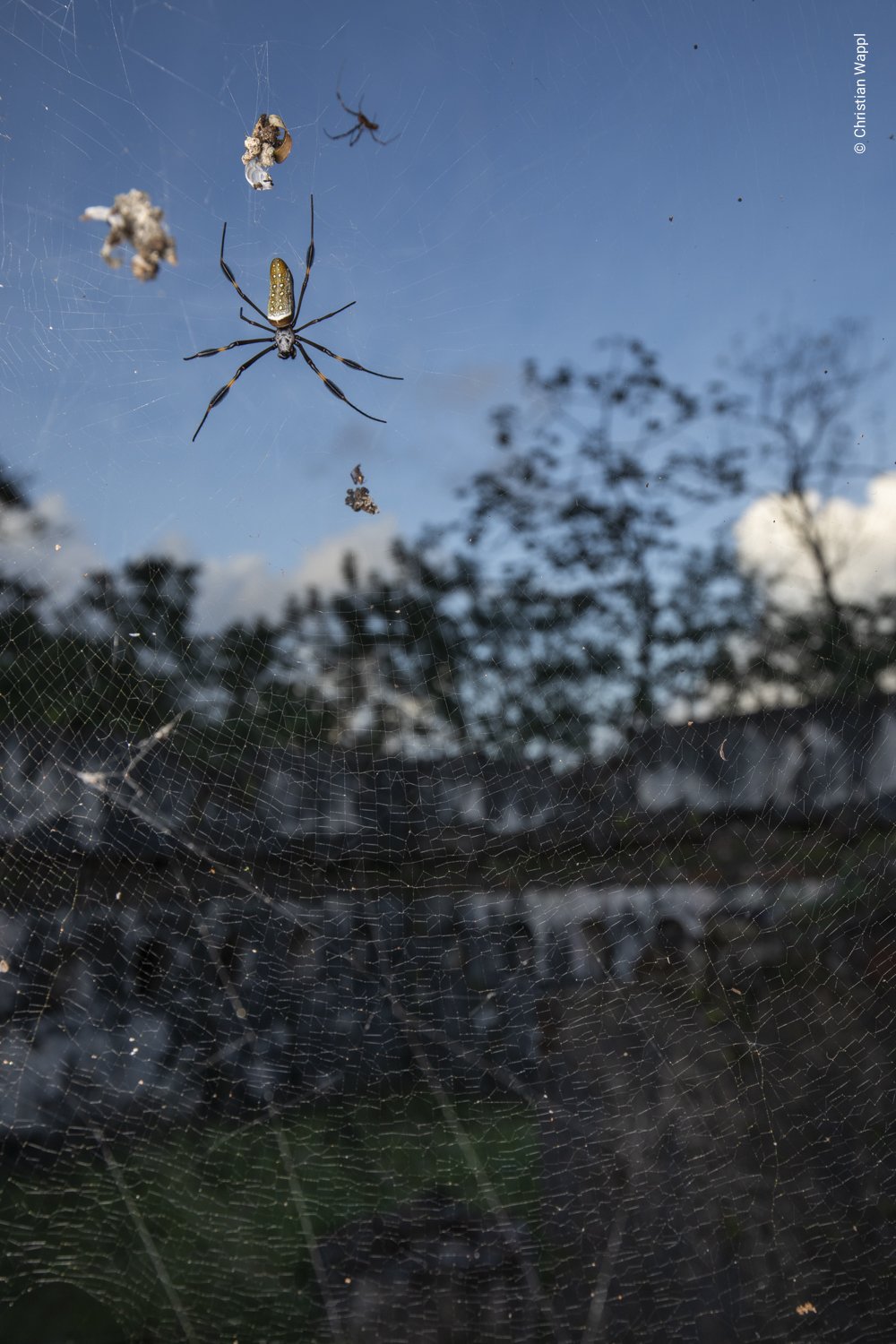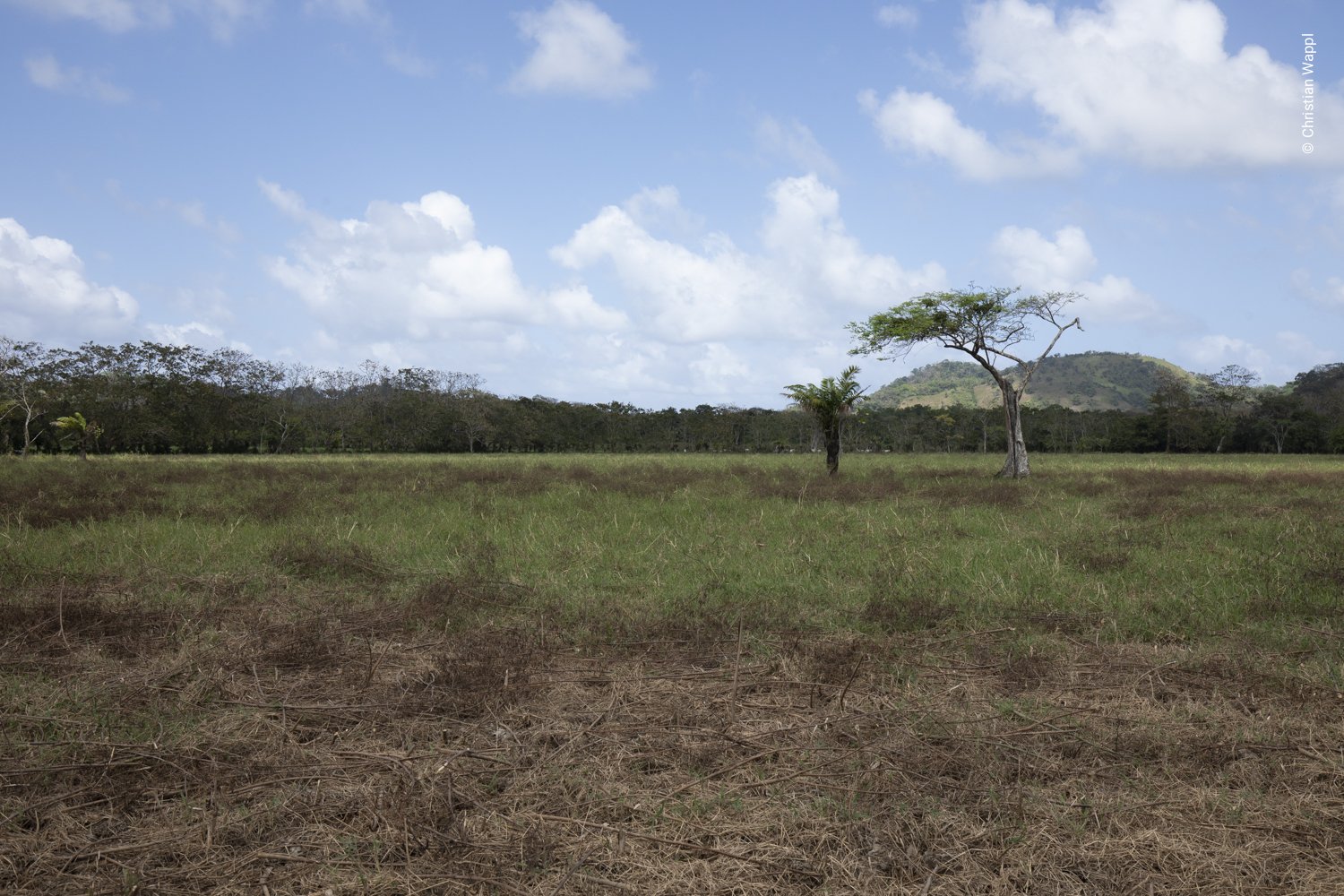Paradise and Purgatory
08.01.2019 – Portobelo, Panama
Rusty cannon at the town’s waterfront
An impressive array of historic forts greeted us in the bay of Portobelo. This Panamanian town saw its fair share of action during the Spanish colonial era, including prominent guests such as Sir Francis Drake and Henry Morgan. Drake died of dysentery on his vessel, the Defiance, while anchored near Portobelo. His body was buried at sea in a lead-lined coffin and has never been recovered. Morgan was luckier and successfully evaded Portobelo’s naval defences by attacking over land. He conquered the town and later ransomed it back to the Spanish crown.
Sadly, at the time of our visit the atmosphere of this once exceptional town had much in common with a garbage dump. After four days at sea, we had certainly hoped for a prettier sight. Trash littered the streets, the bay was dotted with shipwrecks, and on the outskirts, the skeleton of an autobus lay, stripped bare of functional parts and left to rust. The omnipresent black vultures (Coragyps atratus) and the occasional turkey vulture (Cathartes aura) completed the foreboding atmosphere. Worst of all, the historic forts have been on the UNESCO List of World Heritage in Danger since 2012 due to lack of maintenance.
I was surprised to find a number of expats from first-world countries living in this desolate town. Many of them had been stranded after their boats had been wrecked by a hurricane. Some continued to live on their floating coffins, unable to move on to greener pastures, while others managed to eke out an existence on land. While I can’t say anything definitive about the crime rate, a yacht anchored maybe fifty meters beside the Imagine fell victim to an armed robbery one night. Certainly not a good sign, considering the short period of time we were there.
As the town itself was quite off-putting, I quickly turned my attention to the surrounding nature. The rainforest was heavily degraded, but exploring the paths and more remote forts was still an enjoyable experience. I observed many quintessentially Central American animals such as leafcutter ants (Atta sp.), large orb-weaving spiders (Nephila clavipes), mantled howler monkeys (Alouatta palliata) and various parrots (Amazona spp.).
The most promising habitat, however, was the coastal mangrove forest. I was eager to uncover its secrets, so I rented a kayak from a friendly Frenchman, stowed my gear in a waterproof bag and set out to explore. I quickly encountered a myriad of lifeforms, including mangrove tree crabs (Aratus pisonii), four species of kingfisher and eight species of heron. My personal highlight was the ringed kingfisher (Megaceryle torquata), an oversized kingfisher weighing up to 340 grams. Based on the high abundance of fish-eating birds, there had to be all kinds of action going on beneath the surface. The canals were surprisingly deep, too. Probing the turbid waters with my paddle, I did not encounter solid ground. Further upstream, where the water was fresh and the mangroves gave way to rainforest, large patches of vegetation had been cleared to farm cattle. Luckily, the mangroves themselves appeared to be in better shape. On the outskirts, I encountered heaps of garbage and the occasional fisherman trying his luck with a handline, but as I delved deeper into the mangrove forest, I was alone with nature. I noticed that biting insects, which people often associate with mangrove forests, were surprisingly rare. A single location in the middle of nowhere, absolutely teeming with biting midges, was the only exception. To me, there was no obvious reason behind this phenomenon, but I didn’t feel like stopping to investigate any further. Paddling through the canals, I spent a very enjoyable day feeling like an explorer back in the early days of the continent’s discovery.
On my way home, after I’d left the mangrove forest behind me, I stopped to investigate some of the shipwrecks stranded in waist-deep water. Nature had been quick to reclaim them. One wreck in particular, which had once served as some sort of motorized fishing vessel, was used as a daytime perch by a variety of birds, including brown pelicans (Pelecanus occidentalis) and great terns (Thalasseus maximus). With the exception of a lone gull, the birds had already left for their night-time roosts by the time I climbed aboard, but droppings and remnants of their prey reminded me of their presence. The boat’s hull had been colonised by barnacles and mussels, and a few small, hardy plants were beginning to grow inside the wreck. I even heard the characteristic call of a house gecko (Hemidactylus frenatus). Rummaging through the nearby wreck of the S/Y Loonsong, I stumbled across a thick book entitled “Sailboat Maintenance Manual”. By the looks of it, the owner had not quite taken it to heart.
I thoroughly enjoyed my visit to Portobelo thanks to the mangroves, shipwrecks and forts, despite the unappealing state of the town itself. Nevertheless, the Panama Canal was calling, and so the Imagine set sail to Colón – the last part of my voyage before my return to Austria.



























